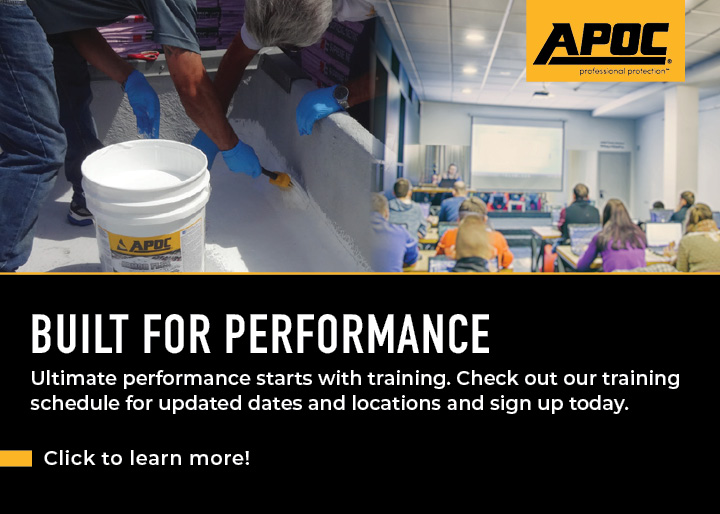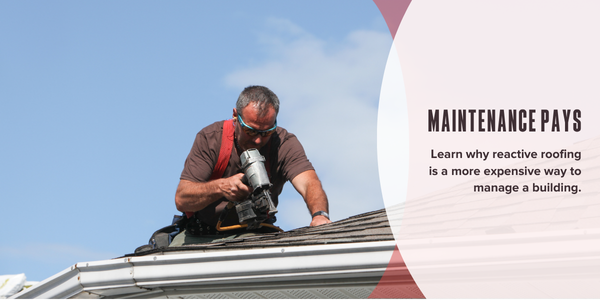UP TO THE MINUTE
Maintenance pays
November 23, 2025 at 3:00 a.m.By Cotney Consulting Group.
Learn why reactive roofing is a more expensive way to manage a building.
There’s a simple truth in our industry: roofs don’t fail overnight; they fail slowly and expensively.
You can see it on nearly every commercial building that’s gone a few too many years without attention. A little water intrusion turns into soaked insulation, corroded deck panels and interior damage that far outweighs what a maintenance plan would’ve cost. The problem isn’t bad luck. It’s bad timing to wait until a crisis before doing anything about it.
Reactive maintenance is the most expensive way to manage a building. Every contractor and facility manager knows this, but it still happens daily. Why? Because roofs are out of sight, and budgets are tight. The mindset tends to be that there is no need to worry about it if it is not leaking.
Math tells a different story. A well-structured roof management plan is one of the smartest investments a building owner can make. The cost is modest compared to the potential expenses of reactively spending money on roof issues. It covers routine inspections, moisture detection and minor preventive repairs that keep problems contained. Ignore that same roof, and the financial picture changes fast. Once insulation becomes saturated or the deck fails, your options will be limited to a complete roof replacement. On a 100,000-square-foot building, that’s not a maintenance problem anymore; it’s a significant financial hit that can wipe out a capital budget for the year. Sadly, most owners think they’re saving money by putting off maintenance. In reality, they’re losing it slowly through higher energy bills, unplanned downtime and those costly emergency calls that always seem to come at the worst possible time. Wet insulation alone can reduce R-values by more than half, forcing HVAC systems to run harder and longer. You might not see the damage from the ground, but you’ll feel it in your utility bills.
Then there’s the operational side, the chaos that comes with leaks. Downtime, tenant complaints, slip hazards and ruined materials all take a toll. Those aren’t just facility issues; they’re reputational hits. I’ve seen companies lose tenants over recurring roof leaks. I’ve seen production lines shut down because of neglected maintenance. In every case, the repair costs were only part of the problem; the real losses were trust, productivity and morale.
A well-run maintenance program changes that picture. It turns roofing from a reactive expense into a managed asset. When you track inspections, document repairs and plan for replacement years in advance, you eliminate surprises. You also extend service life. A ten-year roof can easily reach twenty when properly maintained, and that extra decade is pure profit.
The key is consistency. Two yearly inspections, one before winter and one before spring storms, catch most issues before they escalate. Add a digital record system for photos, repair logs and warranties, and you’ve built a clear maintenance history that protects you during audits, insurance claims or warranty disputes. Many contractors today use drones and infrared scans to make the process faster and more accurate. It’s not complicated; it’s just disciplined.
Let’s not overlook the relationship side. Contractors who offer maintenance programs aren’t just selling roof work; they create recurring value for their clients. Those programs turn one-off jobs into long-term partnerships. Building owners trust the contractors who help them avoid problems, not just fix them.
Roof maintenance isn’t glamorous. It doesn’t make headlines or ribbon-cutting ceremonies. But it’s one of the smartest financial moves a property owner can make and one of the easiest ways a contractor can stand apart from competitors. Every year, you extend the life of a roof, protecting the structure, the people inside and your reputation as a professional.
So, when someone asks whether maintenance pays, don’t just tell them yes, show them the numbers. The proof is on every dry ceiling tile, every energy-efficient building and every facility manager who sleeps better when the rain starts.
Because the only thing more expensive than maintenance… is ignoring it.
Learn more about Cotney Consulting Group in their Coffee Shop Directory or visit www.cotneyconsulting.com.






















Comments
Leave a Reply
Have an account? Login to leave a comment!
Sign In